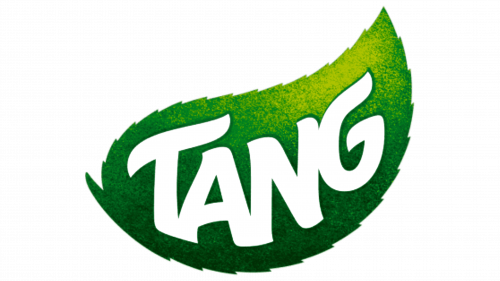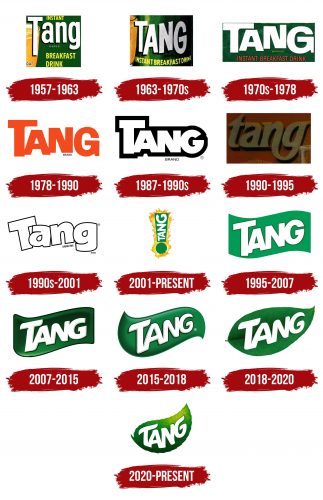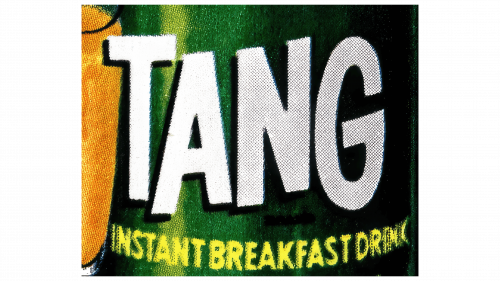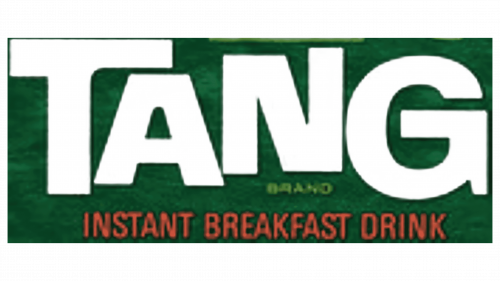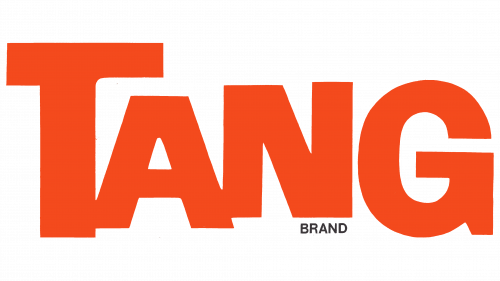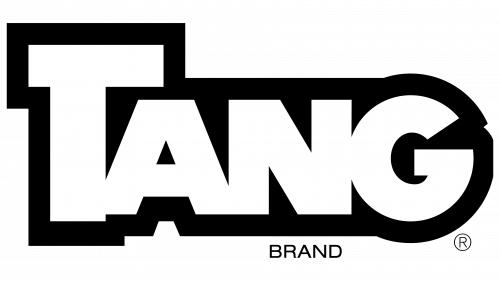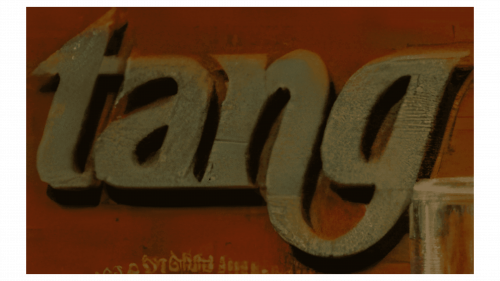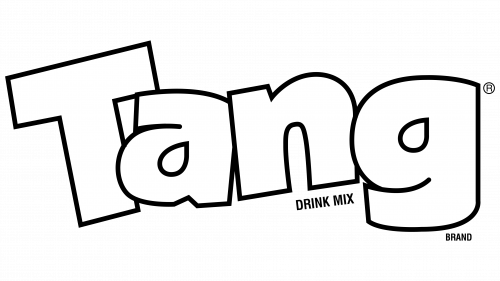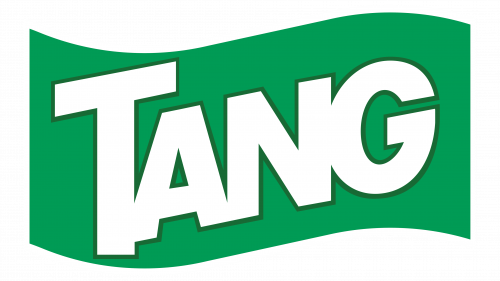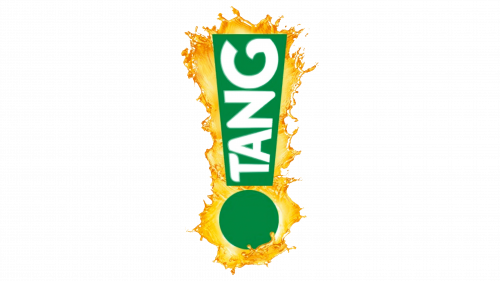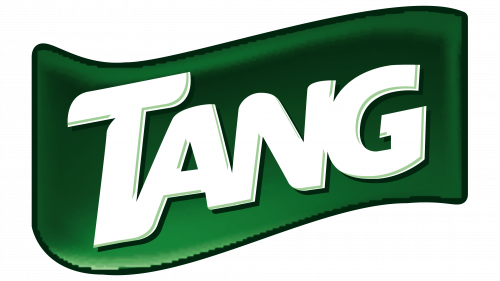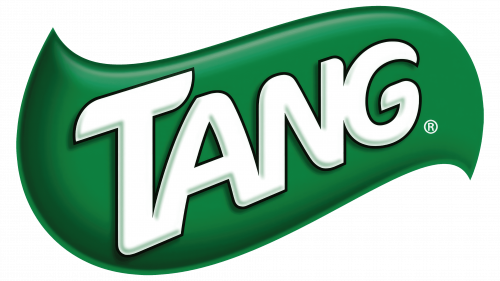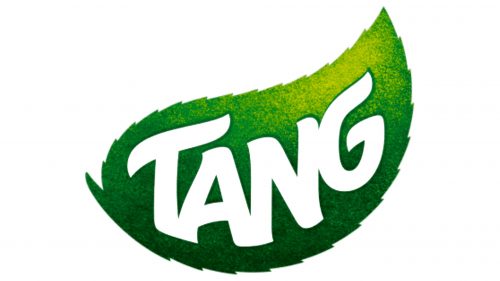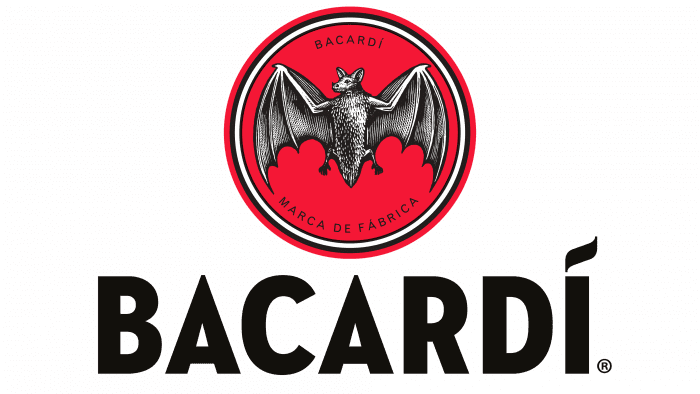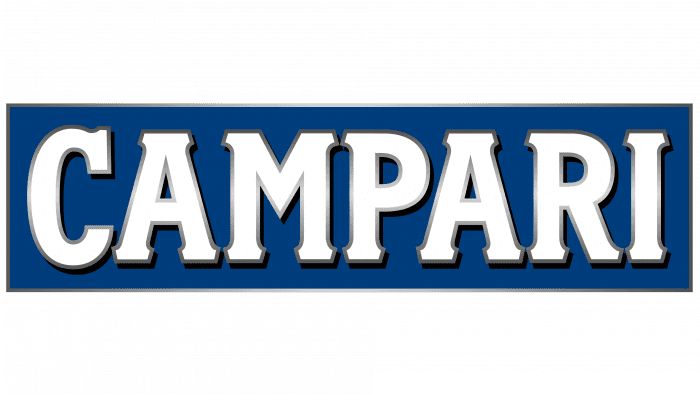The Tang logo symbolizes the company’s products’ natural, eco-friendly, and beneficial qualities. The emblem reflects the richness of fruity flavors and emphasizes the preservation of vitamins in the ingredients, making Tang products appealing to health-conscious consumers.
Tang: Brand overview
In 1957, William A. Mitchell, a chemist employed by General Foods Corporation, created a drink with an orange flavor and powder. This marked the beginning of Tang’s history. Known for his breakthroughs in the food sector, Mitchell set out to develop a nutrient-dense and convenient product. The drink was created as a substitute for fresh orange juice, which was difficult to store and transport and quickly went bad.
The beverage made its official debut on the American market in 1959. Initially, it did not take off with customers. Even with a vigorous marketing campaign, sales did not improve. This presented a positioning difficulty for General Foods because customers were unaware of its uses or benefits over conventional beverages.
In 1962, the product’s destiny changed when NASA decided to use the beverage in the Mercury space program. American astronaut John Glenn was the first person to orbit the planet. Due to this, the drink was instantaneously elevated from a common drink to a symbol of technical advancement and the space age.
Seizing the opportunity quickly, General Foods started heavily endorsing the product’s involvement with the space program in its marketing campaigns. Print materials and advertisements stressed that this was the beverage astronauts drank. This strategy’s great success soared sales.
Its association with space travel persisted in the 1960s and 1970s, contributing to its increased global and domestic popularity. The beverage was used during the Gemini and Apollo missions, including the influential moon landing in 1969.
In the 1970s, the company started to introduce more flavors. Grape, lemon, and grapefruit flavors were added to the basic orange flavor. This product line extension attracted new customers and kept them interested in the brand.
The manufacturer started aggressively pursuing foreign markets in the 1980s. The beverage gained traction in emerging nations as consumers perceived it as a high-end, contemporary good. In some nations, it even came to be associated with powdered drinks.
In 1985, Philip Morris Companies (later renamed Altria Group) purchased General Foods. Due to this combination, the brand gained access to a wider distribution network and more resources for development.
1989, the company launched a new ad campaign aimed at a younger demographic. The tagline “Tang is for Breakfast” presented the beverage as a nutritious substitute for customary morning drinks.
In the 1990s, the company kept developing new tastes and packaging ideas. International markets embraced exotic flavors like passion fruit and mango, and new packaging formats, such as packets for a single meal, were created.
After a corporate reorganization in 2000, the drink joined Kraft Foods. This modification created new chances for growth and integration with Kraft’s wider range of products.
In the 2000s, the company aggressively marketed its products as sources of minerals and vitamins. The drink was positioned as a component of a healthy lifestyle, and new formulas with higher vitamin C and other nutrients were developed.
In 2007, the brand started a global marketing effort to celebrate the drink’s 50th anniversary, emphasizing its innovation-related past. Through this effort, the company was able to attract a new generation of customers and revitalize its image.
The company emphasized innovation and grew its market share in developing nations in the 2010s. Novel goods, like Tang Fruit Tea, fused the classic flavor with new palates.
Currently managed by Mondelez International (previously Kraft Foods), the company introduced the “Wake Up to Morning” global campaign in 2011, promoting the beverage as the ideal option for breakfast. The brand aimed to fortify its position in developing markets, where this campaign was very active.
In 2013, the company debuted a new product named “Fruit Frenzy.” Passion fruit and guava were two new tastes in this series influenced by tropical fruits. “Fruit Frenzy aimed to draw in a younger customer base and broaden the brand’s menu beyond the orange flavor.
By launching “Powdered Drink Mix with Probiotics” in certain nations in 2015, the company made a big advancement in product innovation. The increased customer interest in items that promote digestive health was reflected in this inclusion.
The brand improved its internet visibility in 2017 by starting engaging social media initiatives. These ads featured competitions, challenges, and informative content about the value of a healthy diet to engage younger consumers.
In 2019, the manufacturer introduced ready-to-drink varieties in several areas. This action was taken in response to the increased demand—particularly from urban consumers—for handy product formats.
In 2020, Mondelez released a revised version of its traditional orange drink, which included more vitamins and less sugar. This modification was part of a larger plan to enhance the nutritional value of its goods.
In 2021, the brand debuted a new product line named “Natural.” This series increased consumers’ desire for more natural drinks. “Natural” was sweetened with stevia and other natural sweeteners, with fewer artificial ingredients. The series included traditional orange and new flavors like mango and pineapple. Along with the product, a marketing effort was launched to showcase the natural ingredients and health advantages of the “Natural” series.
The same year, the company improved its online visibility by releasing the “Mix & Match” interactive mobile app. This app allowed users to share their creations with others and mix and match flavors in various contests.
In 2022, the manufacturer introduced “Energy Boost,” a new range of vitamin-fortified goods containing natural caffeine sources, including green tea extract. This brand was created to satisfy the increasing demand for functional drinks, particularly among students and young professionals. “Energy Boost” was promoted as a nutritious substitute for conventional energy drinks.
By introducing the ready-to-drink line in new, practical formats, such as bottles and cartons, the brand increased its market share in the ready-to-drink beverage industry in 2023. This project aimed to satisfy the demands of contemporary customers searching for easy-to-use mobile solutions.
The company carried on the innovative legacy started by William A. Mitchell over sixty years ago by staying loyal to its initial goal of offering a handy and wholesome drink. The brand has consistently changed to meet the shifting needs of customers, starting as an orange-flavored drink in powder form and expanding into a wide range of products.
Meaning and History
What is Tang?
It is a brand of powdered drink mixes owned by Mondelez International. Originally developed as an alternative to orange juice, it has become known for its distinctive tart flavor and association with space travel. The product is a fruit-flavored powder mixed with water to produce a drink. While orange remains the most recognizable flavor, the brand has expanded its lineup to include a variety of fruit flavors to cater to different tastes and markets worldwide. The brand gained significant popularity when NASA astronauts used it during space missions, which became an important part of the company’s marketing strategy. It is renowned for its long shelf life, convenience, and affordability, making it a popular choice in many families. It is often advertised as a source of vitamin C and other nutrients. The brand is globally recognized and is particularly popular in many developing countries, where it is sometimes seen as an affordable alternative to fresh fruit juices.
1957 – 1963
Tang was first introduced as a “breakfast drink,” as reflected in the emblem. The thin white letters of the name emphasize the product’s safety and low-calorie content. The especially elongated first letter, “T,” draws attention to maintaining a slim figure with regular mix use.
To the left of the logo is an image of a glass filled with freshly made orange juice, which stimulates appetite and reinforces associations with morning freshness. The green background behind the name subconsciously evokes connections to nature, plants, and the product’s natural qualities, enhancing trust in its health benefits.
1963 – 1970s
Ten years later, when NASA recognized and used the brand, the logo received an updated look: white capital letters that seemed to float against the background. The three-dimensional characters resembled bubbles in a glass, reinforcing associations with beverages and hinting at weightlessness in space. This effect also symbolized the brand’s rapid sales growth, emphasized by using all caps in the text.
The yellow tagline “Instant Breakfast Drink,” rendered in the color of orange juice, directly indicated the contents of the package and strengthened associations with a ready-to-drink morning beverage.
1970s – 1978
The text in the logo maintained its weightless effect, creating the impression that it is suspended and floating in the air or water. However, the letters became wider, reflecting the company’s growing popularity and the expanding variety of drink flavors.
The letter “T” in the logo seems to embrace the “A” with one of its sides, adding a sense of dynamism and unity to the logo. The varying thickness of the glyph and the smooth curve on the right resembles a dispenser on a container from which the ready-to-drink juice can be poured, emphasizing the product’s convenience and readiness for consumption.
1978 – 1990
In the new logo, the font of the text remained entirely unchanged, but the color was switched to red. The name became the sole element of the logo, symbolizing the launch of a new concentrate and the introduction of a red-colored drink in the product line. This minimalist approach also highlights the brand’s global reach, emphasizing its recognizability and influence in the international market.
1987 – 1990s
The new black-and-white logo was significantly different from previous versions. Although the font and style of the text were preserved, the letters became white, surrounded by a wide black background that traced the contours of the word. This high-contrast design drew attention and was ideal for any packaging. The white characters emphasized the benefits and safety of the ingredients. The emblem appeared like a portal to a world of freshness and light, creating associations with the product’s cleanliness and quality.
1990 – 1995
The new Tang emblem featured lowercase letters in gold, which formed the foundation of the design. The golden color symbolized the brand’s achievements and the product’s value inside the packages while also reflecting the orange, the first fruit used in powder production. The glyphs of the letters “g” and “n” were connected at the bottom, creating a visual association with drinking straws. This design element linked the logo to the liquid form of the final product and resembled the curve of a smile, emphasizing the brand’s friendliness and approachability.
1990s – 2001
After Kraft and General Foods merged, the brand identities were revised. White letters with a thin black outline made the emblem visually light and almost subtle. With its “stumbling” letters, the logo took on a childlike softness and lightness, creating a sense of gentleness and friendliness. The company aimed to shift the focus to the benefits of the ingredients, emphasizing the products’ naturalness and safety.
1995 – 2007
In 1995, the global push for sustainability and natural products set a new direction for the company’s future emblems. The green background, designed as a waving banner, emphasized the natural flavors of the brand’s powders. The white lettering adopted more precise and even glyphs, giving the logo a sense of solidity. The slight upward tilt of the text symbolized the brand’s growth and development. The green outline reinforced the connection to nature, highlighting the product’s eco-friendliness and natural qualities.
2001 – today
In 2001, the brand introduced an entirely new concept. A green exclamation mark, as a powerful statement, became the central element, literally “striking” the drink. Tang waves artistically splashed outward, creating the effect of a flavor explosion. This design conveyed the message: only Tang, with no compromises. The brand name was placed vertically within the upper part of the exclamation mark, adding uniqueness to the logo. The logo exuded energy and dynamism, positioning Tang to concentrate on sports and active lifestyles.
2007 – 2015
The dark green wave with a sharp outline made the emblem appear striking. The name’s bold, three-dimensional white letters immediately draw attention inside the wave. The company reduced the sugar content in the drink by 50%, and the new logo highlights this important step towards naturalness and health benefits. The emblem embodies the updated approach to the product, emphasizing its improved qualities and the commitment to a healthier formula.
2015 – 2018
The company’s logo has seemingly unfolded, symbolizing the ambition to conquer new countries and continents under its new owner, Mondelēz International. Now, the consumer sees a three-dimensional inscription from a slight angle, adding a sense of dynamism and depth to the logo. The background ends are curved and tapered on both sides, giving the image a resemblance to a toothpaste trail. This creates the impression that the concentrate has been squeezed from a tube and is ready to be mixed, highlighting the product’s readiness for use and emphasizing its practicality and convenience.
2018 – 2020
The brand name was placed on a natural orange leaf, giving the new emblem a fresh and natural appearance. This emblem captured the brand’s spirit by incorporating elements of its historical past, highlighting the company’s extensive experience. The combination of history and modernity symbolized the brand’s resilience and growth. The realistic depiction of greenery emphasized the natural and beneficial composition, underscoring the company’s commitment to quality and natural ingredients.
2020 – today
The modern Tang logo is dynamic and vibrant. The main symbol is a stylized leaf that visually merges with the brand name, creating a cohesive and harmonious composition. The leaf represents the product’s natural ingredients, emphasizing its connection to nature and its natural qualities.
Interestingly, in this logo, the edges of the leaf are no longer smooth but have become jagged, creating an abstract image not tied to any specific tree or plant. This accentuates the product’s universality and eco-friendliness, making it appealing to a wide audience. The leaf, as if illuminated by sunlight, evokes a sense of freshness and purity associated with natural ingredients that travel from nature directly to the consumer.
The “Tang” lettering is done in white, contrasting well with the green and yellow hues of the leaf. This contrast enhances the emblem’s visibility, making it more noticeable and easy to remember. The letters in the name have soft curves and smooth lines, indicating a friendly and dynamic character. They seem to “fit” into the leaf, highlighting the unity of nature and the product.
The effect of the leaf gently descending to the bottom of a glass adds depth to the logo and symbolizes the process of preparing the drink, which easily dissolves in water while retaining all the freshness and rich fruit flavor. This visual technique emphasizes the product’s ease and simplicity of use.
